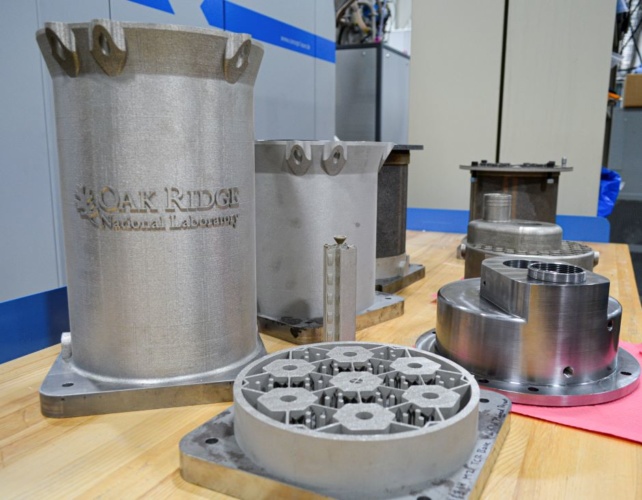This is the ambition of researchers at the US Department of Energy’s Oak Ridge National Laboratory (ORNL) who are refining their design of a 3D-printed nuclear reactor core, scaling up the additive manufacturing process necessary to build it, and developing methods to confirm the consistency and reliability of its printed components.
MORE FROM THE NUCLEAR INDUSTRY
The Transformational Challenge Reactor Demonstration Program’s approach to nuclear energy is said to use advances from ORNL in manufacturing, materials, nuclear science, nuclear engineering, high-performance computing, data analytics and related fields. The lab aims to operate the first-of-its-kind reactor by 2023.
“The nuclear industry is still constrained in thinking about the way we design, build and deploy nuclear energy technology,” ORNL Director Thomas Zacharia said in a statement. “DOE [US Department of Energy] launched this program to seek a new approach to rapidly and economically develop transformational energy solutions that deliver reliable, clean energy.”
https://www.youtube.com/watch?time_continue=3&v=oiOyvS-1OEM&feature=emb_logo
According to ORNL, TCR will introduce new, advanced materials and use integrated sensors and controls to provide an optimised and efficient system that reduces costs and offers a new direction for reactor design, manufacturing, licensing and operation.
The TCR program has completed several foundational experiments including selection of a core design, and a three-month ‘sprint’ that demonstrated the agility of the additive manufacturing technology to produce a prototype reactor core.
Researchers will now focus on refining the selected design and the processes that will ensure an optimal and reliable energy system. Monitoring technologies continually assess the manufacturing process, providing live data streams that enable real-time qualification of the printed material and performance analysis through artificial intelligence. Post-build testing will assess component performance and establish links between the behaviour of each part and its live manufacturing data.

“We have been aggressively developing the capability to make this program a reality over the last several months, and our effort has proven that this technology is ready to demonstrate a 3D-printed nuclear reactor core,” said Kurt Terrani, the TCR technical director. “The current situation for nuclear is dire. This is a foundational effort that can open the floodgates to rapid innovation for the nuclear community.”
As part of deploying a 3D-printed nuclear reactor, the program will also create a digital platform that will help in handing off the technology to industry for rapid adoption of additively manufactured nuclear energy technology.
“The entire TCR concept is made possible because of the significant advances in additive manufacturing process technology,” Terrani said. “By using 3D printing, we can use technology and materials that the nuclear community has been unable to capitalise on in the last several decades. This includes sensors for near autonomous control and a library of data and a new and accelerated approach to qualification that will benefit the entire nuclear community.”




Glasgow trial explores AR cues for autonomous road safety
They've ploughed into a few vulnerable road users in the past. Making that less likely will make it spectacularly easy to stop the traffic for...